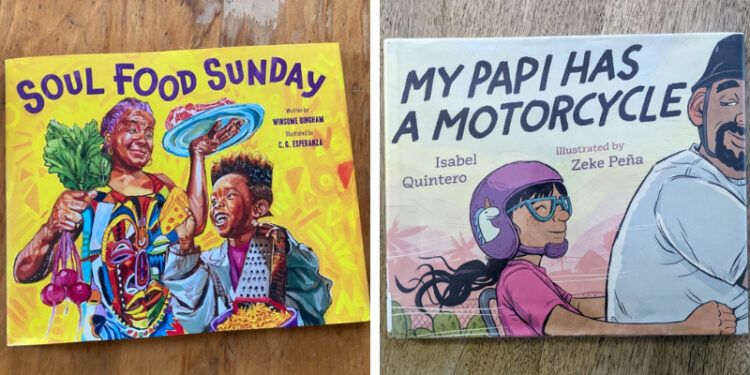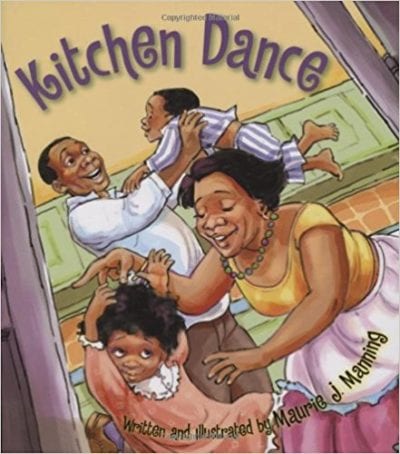Fantastic mentor texts for narrative writing can really help take student writing to the next level. These are compelling read-alouds that you can pull out again and again to show kids “how writers do it.” There’s no need to feel limited to the same titles you’ve always used or the ones your writing curriculum suggests. Work your way through this big list of mentor texts for narrative writing, both old and new, until you find your new favorites. You’re welcome.
(Just a heads up, WeAreTeachers may collect a share of sales from the links on this page. We only recommend items our team loves!)
1. Together We Ride by Valerie Bolling
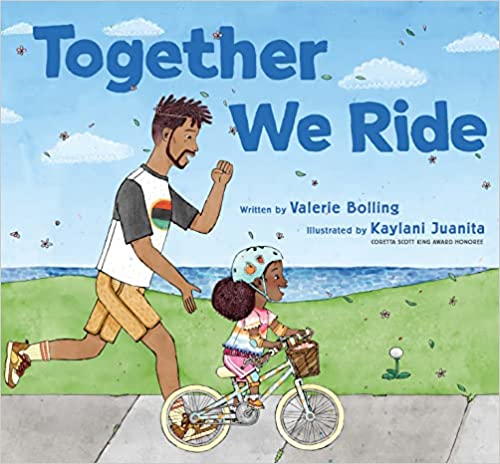
This book takes the classic learning-to-ride-a-bike story to the next level. A girl perseveres through fears and falls with the help of her dad. Add this to your mentor texts for illustrated narrative writing. Right down to the dad’s dreads and beard, the stickers on the girl’s bike helmet, and the Golden Gate Bridge in the background, the artwork makes readers feel like they are right there—and can show kids how to add more of their own details to their stories via drawing.
Buy it: Together We Ride on Amazon
2. New Shoes by Chris Raschka
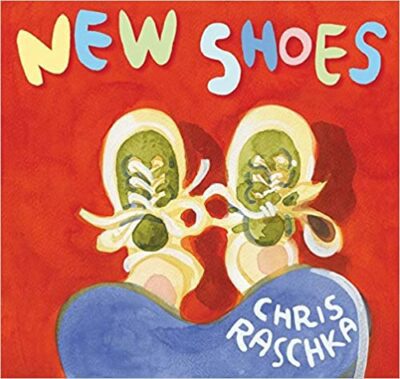
A child discovers his old shoes are too tight and heads to the shoe store to pick out new ones. Use this to show new writers how they can tell a great story with just a few sentences. You can also introduce new techniques for illustrations; all these pictures are delightfully zoomed in.
Buy it: New Shoes on Amazon
3. Granny and Bean by Karen Hesse
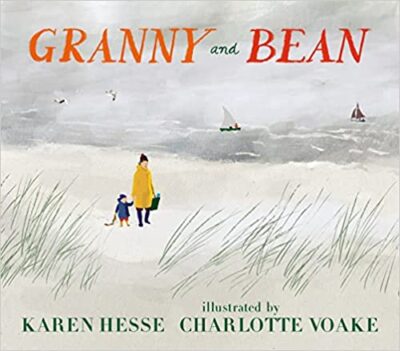
Granny and Bean go for a walk on a cloudy day. They enjoy all the simple pleasures of the beach, like waves, shells, sand, petting dogs, and seaside snacks. Use this to share an attainable example of a strong narrative for younger writers. Each page has only a short sentence or two, but they manage to tell a beautiful story.
Buy it: Granny and Bean on Amazon
4. The Secret Fawn by Kallie George and Elly MacKay
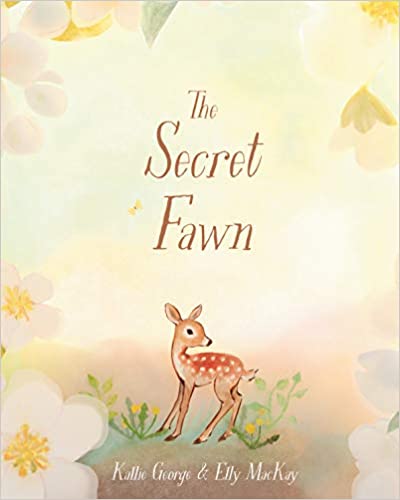
As the youngest sibling, a girl feels like she misses everything—including the deer her family saw in the yard. She heads outdoors to try to see it for herself and ends up having an even more special experience. Use this quiet little story to show kids how to focus their narrative on a small but significant event.
Buy it: The Secret Fawn on Amazon
5. Hiking Day by Anne Rockwell
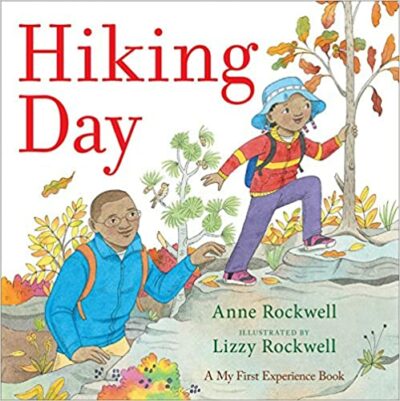
A girl and her parents take a local hike to enjoy all the sights and sounds of fall. Use this to teach about adding more to a narrative by including details, thoughts, sounds, and dialogue.
Buy it: Hiking Day on Amazon
6. City Moon by Rachael Cole and Blanca Gómez
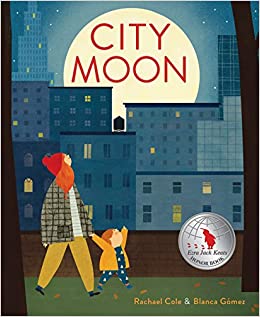
A boy and his mom take a walk in the city at night to look for the moon. Add this to the mentor texts for narrative writing you use to teach about bringing the setting to life. Also, show students how to stretch one brief experience into a story that feels important.
Buy it: City Moon on Amazon
7. Not Little by Maya Myers
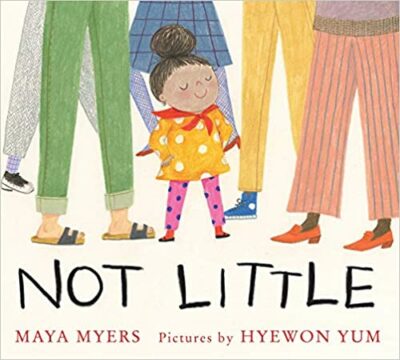
Dot is the smallest person in her family, but she doesn’t hesitate to stand up for the new kid when he’s bullied in the cafeteria. (Clearly, she is NOT LITTLE!) Use this to teach about strong, impactful sentences. Plus, introduce the technique of using a repeating line to show readers what’s important in your story.
Buy it: Not Little on Amazon
8. Jabari Jumps by Gaia Cornwall
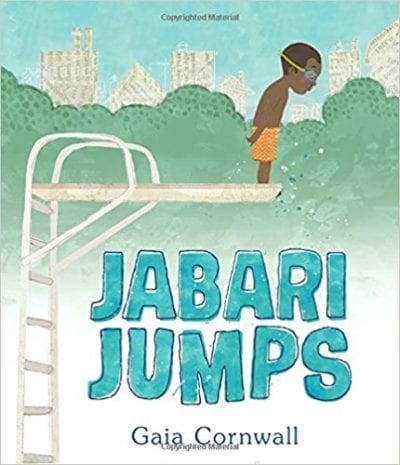
Jabari has done everything he needs to in order to learn how to jump into and swim in water—he’s ready for the diving board. He stops to stretch. Then he stops to think. He just doesn’t feel ready. Use this to show how to stretch a small moment over several pages.
Buy it: Jabari Jumps on Amazon
9. Kitchen Dance by Maurie J. Manning
A little girl wakes up in her house because music is playing downstairs. She wakes her brother, and they sneak downstairs to find their parents dancing in the kitchen. Their parents welcome them and invite them to join the dance. Use this to show students how to write about the small but precious moments in their family lives.
Buy it: Kitchen Dance on Amazon
10. Roller Coaster by Marla Frazee

This picture book is all about one ride on a roller coaster and all the emotions and excitement that it delivers. Use this to teach small-moment writing and text/writing features that students love to emulate—using dashes to stretch out words, using CAPITAL letters to place emphasis on words, and using sound words.
Buy it: Roller Coaster on Amazon
11. Abuelita and I Make Flan by Adriana Hernández Bergstrom
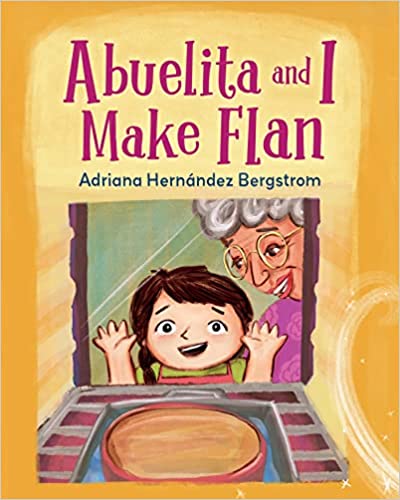
Anita is excited to help her grandmother make her birthday dessert—so excited that she breaks her grandmother’s special plate. Can she help enough to make up for it? Use this to show kids how to add flair to their narratives with speech bubbles, labels, and different types of text. Also use it to encourage kids to try to include the narrator’s internal monologue in their writing.
Buy it: Abuelita and I Make Flan on Amazon
12. When Lola Visits by Michelle Sterling

With rich detail, a girl describes how summer smells, tastes, and feels when her grandmother visits from the Philippines. Use this to teach about adding sensory details to narrative writing.
Buy it: When Lola Visits on Amazon
13. Applesauce Day by Lisa J. Amstutz
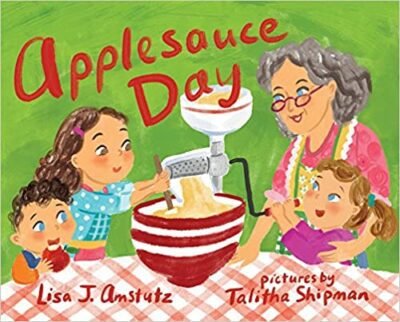
A girl and her family pick apples and make applesauce in her family’s special pot, which has been passed down through generations. Use this to teach about writing about an experience one bit at a time.
Buy it: Applesauce Day on Amazon
14. The Camping Trip by Jennifer K. Mann
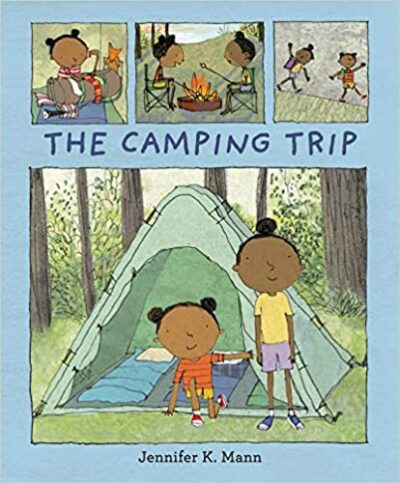
City-dweller Ernestine is so excited to go camping with her cousin. It turns out there are a few parts of the great outdoors that take some getting used to, though. Use this to teach about experimenting with speech bubbles and different page layouts as a way to add interest and detail to narrative pieces.
Buy it: The Camping Trip on Amazon
15. Joy Ride by Sherri Duskey Rinker
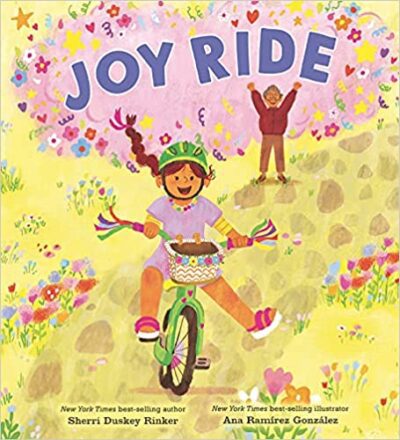
Joy finds a beat-up bike and convinces her tinkering granddad to help her fix it up. But when her peers make fun of her new ride, she makes the impulsive decision to push the bike down a steep hill, and then must face the feelings that follow. Use this as a solid example of a more detailed personal narrative that includes dialogue, characters’ thoughts and feelings, and interesting language.
Buy it: Joy Ride on Amazon
16. Powwow Day by Traci Sorell
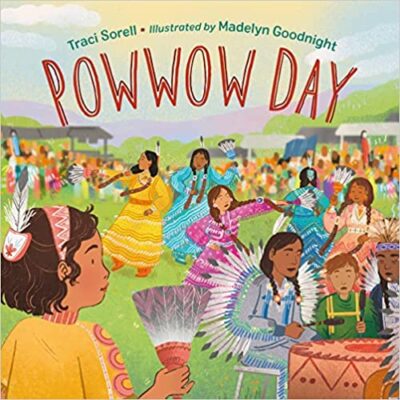
It’s the day of the tribal powwow, but River is worried. She’s been sick and can’t join in as she usually does. The healing dance her friends and family perform inspires her to keep getting better. Use this to model the impact of using different sentence lengths. Intentional line-breaks and onomatopoeia make the text feel almost like poetry too.
Buy it: Powwow Day on Amazon
17. Love Birds by Jane Yolen
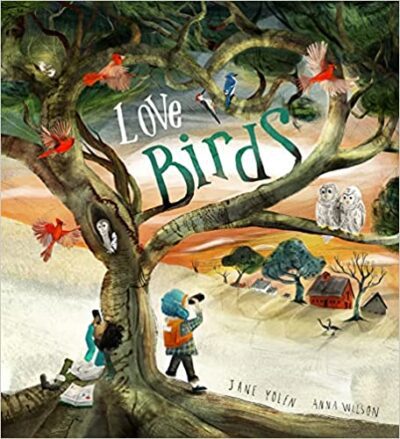
Jon doesn’t have any friends yet in his new town, but he keeps busy birding, his favorite pastime. A funny coincidence in the woods introduces him to his first new friend, a fellow birder. The author wrote this as a companion to the classic Owl Moon, one of our longtime favorite mentor texts for narrative writing. Use it to model how to include details about sounds and setting.
Buy it: Love Birds on Amazon
18. Soul Food Sunday by Winsome Bingham

Every Sunday the whole extended family gathers at Granny’s for a big meal. Today, Granny invites her grandson to help prepare the family’s favorite dishes for the first time. From grating the cheese to washing the grit from the greens, he learns about each crucial step. Use this to model how to break down an experience into small parts and describe them in more detail.
Buy it: Soul Food Sunday on Amazon
19. The Electric Slide and Kai by Kelly J. Baptist
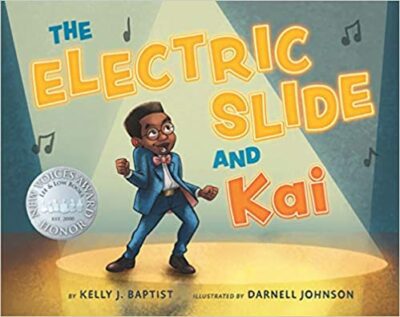
As his family prepares to attend a big wedding, Kai desperately wants to impress his grandad with his dance moves so that he’ll give him a “dance nickname” like other members of the family. Use this to teach students to add their thoughts, goals, and emotions to their narrative writing, and to show, not tell, using dialogue and characters’ actions.
Buy it: The Electric Slide and Kai on Amazon
20. A Thousand White Butterflies by Jessica Betancourt-Perez and Karen Lynn Williams
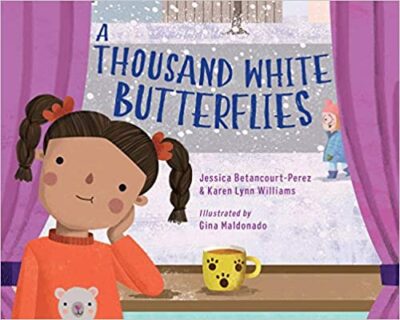
Isabella recently immigrated to the United States from Colombia and is eager to start school and make friends, but an unexpected snow day changes her big plans. Use this to model writing precise sentences and to show how a character’s emotions change during a story. If you have bilingual students, this is also a nice one to show how to weave in words from another language.
Buy it: A Thousand White Butterflies on Amazon
21. Thunder Cake by Patricia Polacco
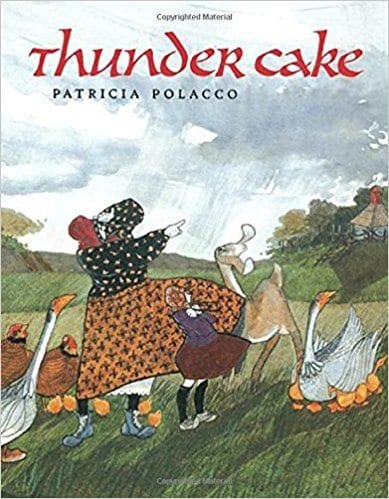
There is a loud thunderstorm at Grandma’s old farmhouse. “This is Thunder Cake baking weather,” calls Grandma, as she and her granddaughter hurry to gather the ingredients around the farm. A real Thunder Cake must reach the oven before the storm arrives, and the closer it gets, the more determined they become. This is one of our favorite tried-and-true mentor texts for narrative writing to model interesting openings and setting a scene. Also use it to talk about words that sound like what they mean, strong verbs, punctuation, and including an “extra”—in this case, a recipe—at the end of the story.
Buy it: Thunder Cake on Amazon
22. Tight Times by Barbara Shook Hazen
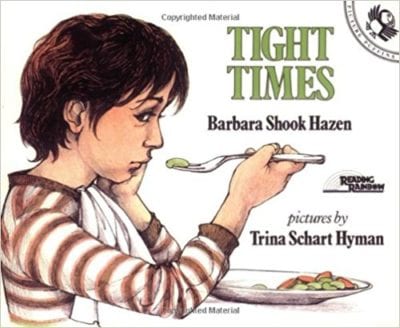
A little boy wants a pet, but his family has no money. On the day his father loses his job, he finds a stray kitten. Use this for teaching about inferring and how to create a scene that lets readers decide what’s happening.
Buy it: Tight Times on Amazon
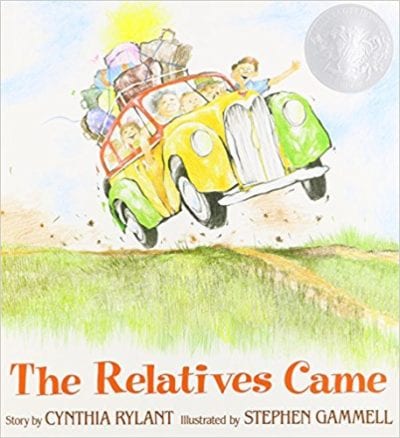
The relatives came in a rainbow-colored station wagon. Everyone hugged and hugged all over the house. They stayed all summer, gardening and playing music. When they finally had to leave, they were sad but knew they would be together again next summer. Use this to spark memories of students’ family visits and trips, which are always good inspiration for narrative writing.
Buy it: The Relatives Came on Amazon
24. Ralph Tells a Story by Abby Hanlon
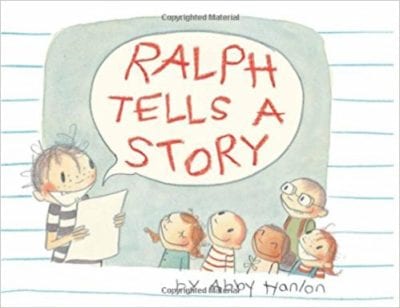
A boy named Ralph has zero writing ideas. Nothing ever happens to him. His life is so boring. Sound familiar? Use this to teach about finding writing ideas.
Buy it: Ralph Tells a Story on Amazon
25. My Dog Mouse by Eva Lindström
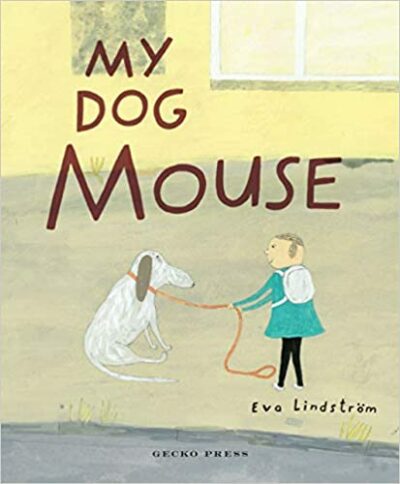
A girl walks her neighbor’s dog, Mouse. He has ears as thin as pancakes that flap like flags in the wind, and he eats meatballs in one bite. This is one of our favorite mentor texts for narrative writing for the younger grades. Use it to teach adding small, meaningful details and interesting comparisons to help readers imagine your story. It’s also a good example of a powerful lead and ending.
Buy it: My Dog Mouse on Amazon
26. A Space for Me by Cathryn Falwell
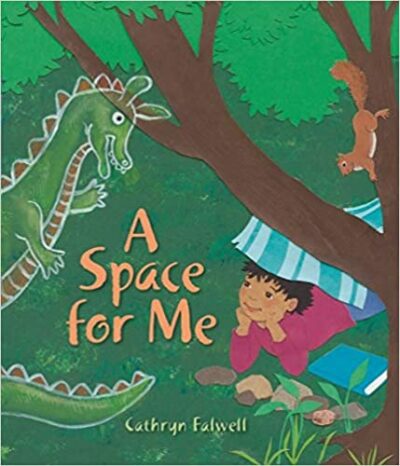
An older brother gets tired of sharing his room with his annoying little bro, so he decides to build his own space in his yard. Both brothers learn from the experience and end up finding common ground together. Use this to teach about sticking close to a meaningful theme to write a focused narrative.
Buy it: A Space for Me on Amazon
27. My Papi Has a Motorcycle by Isabel Quintero
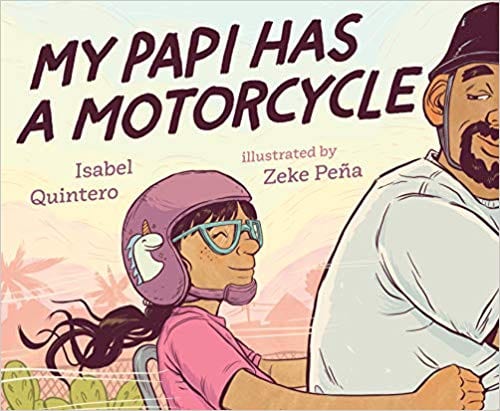
A young girl tells the tale of a motorcycle ride around her neighborhood with her Papi. Use this to model ways to characterize an important person throughout a story. It’s also great for modeling how to use vibrant descriptions and for building energy across the arc of a narrative.
Buy it: My Papi Has a Motorcycle on Amazon
28. A Map Into the World by Kao Kalia Yang
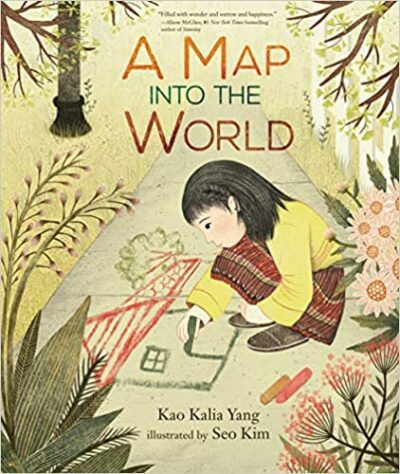
A girl moves to a new house and welcomes twin baby brothers to her family. Next door, an elderly neighbor grieves the loss of his wife. Use this to show students how describing what each character does or says in a situation can help create a complete scene. Also explore strategies for conveying the passage of time.
Buy it: A Map Into the World on Amazon
29. Evelyn Del Rey Is Moving Away by Meg Medina
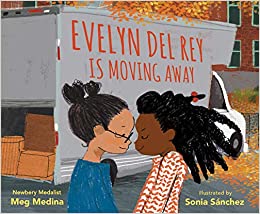
Two best friends spend a final day together before one of them moves away. This one is full of heart, with equal parts sadness and sweetness. Use this to teach … well, everything. Model strong leads and endings, how to use small details to create a mood, and how to do justice to a particularly emotional experience by telling it step by step.
Buy it: Evelyn Del Rey Is Moving Away on Amazon
30. Watercress by Andrea Wang
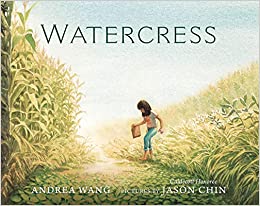
When a girl’s parents spot watercress growing on the roadside, they pull over to pick it so they can make a meal reminiscent of their native China. The girl hates the whole experience but ends up appreciating it more as she learns what it means to her family. Add this to your mentor texts for narrative writing for when you work on revising for tighter, more precise language. Imagine how this narrative might have started out and compare that to its sparse but incredibly powerful final text. Also, share the author’s note, in which she describes the experience that led to this book, to teach about how to choose meaningful narrative topics.
Buy it: Watercress on Amazon
31. On the Trapline by David A. Robertson and Julie Flett
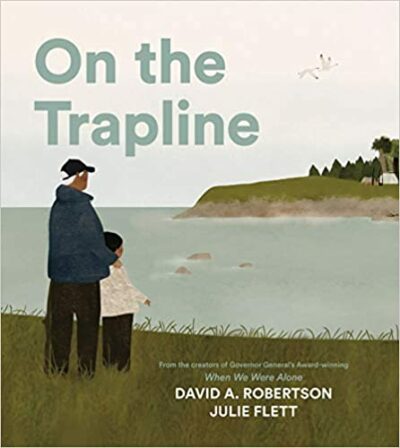
A boy visits his grandfather’s old trapline in the northern wilderness, which is steeped in memories. Besides being a beautiful example of personal narrative, this is a fascinating exploration of Cree tradition for kids. Use this to model how to include details and dialogue to explain things to readers and for planning an interesting structure for your narrative. (In this case, it’s a repeating line at the end of each section that explains a Cree word.) It’s also a nice example of how to weave memories of the past into a present-tense narrative.
Buy it: On the Trapline on Amazon

